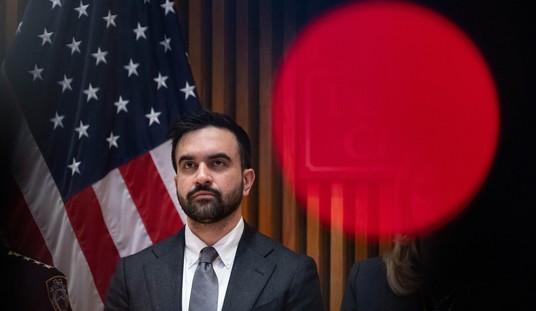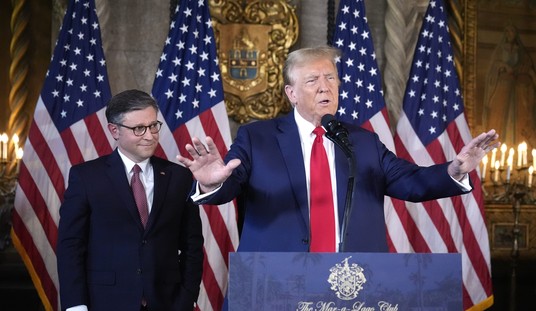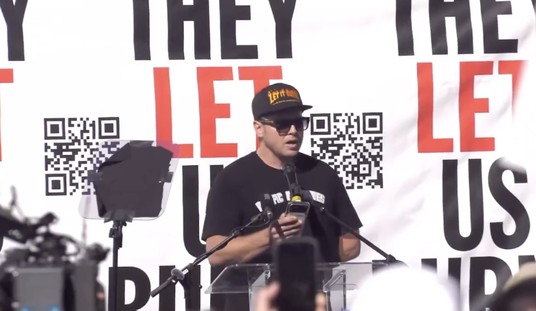
Washington, D.C. is really good at naming bad things well. So as to obfuscate how bad the things they’re naming – and passing – are.
Obamacare’s actual name was “Patient Protection and Affordable Care Act.”
Obamacare assaulted with government hundreds of millions of patients – rather than protecting them.
Included in the government’s assault – was on average doubling insurance premiums and tripling insurance deductibles. Which is the antithesis of affordable care.
Good name. Terrible legislation.
Yet another example:
“The law represents the most significant legislative change to the U.S. patent system since the Patent Act of 1952.”
Indeed it was. In that it made it exponentially harder for America to invent things:
“The America Invents Act (AIA) was the single worst disaster in the 226 year history of the U.S. patent system. The AIA did very real damage – enough to put many inventors out of business and discourage many others.”
Good name. Terrible legislation.
The America Invents Act was passed for several phony reasons.
One – was addressing the alleged problem of alleged “patent trolls.”
The anti-patent freaks define “patent trolls” – as anyone besides the person who filed for the patent…owning the patent.
Except inventors – almost never want to manufacture anything they’ve invented. They’d much rather continue inventing. So they sell their patents – and plow that coin into their next inventions.
Which, by the way, is exactly what the rest of the planet should want them doing. We want them in their labs and offices and garages – inventing the next bunches of really cool stuff.
Most inventors sell their patents to other people. Who then manufacture the products the inventors invented. Or license the patents to other people who manufacture the products the inventors invented.
These are the people the anti-patent freaks call “patent trolls.”
There is absolutely nothing wrong with what these after-invention patent holders do. In fact, they are a crucial component of our nation’s continued economic success.
They ensure the patents – reach their maximum potential.
If you’ve ever met a typical inventor – you know they aren’t manufacturing-company-CEO material. The Inventor skill set and the Manufacturing CEO skill set – have almost no skills in common.
Better to have the Inventor inventing – and the Manufacturer manufacturing.
Amongst many other atrocities – the AIA is a huge boon to patent thieves.
And most of those patent thieves – are huge corporations:
“(T)he Act clearly favors large corporations, particularly those in the financial services, software and pharmaceutical industries, over smaller companies and start-ups.”
Because why would we want to foster the Little Guy Inventor? They can’t kick in anywhere near the huge political contributions “large corporations” can:
“Of course, it was a great new law for the large multinational corporations who pumped hundreds of millions of dollars into Washington D.C. in the form of political contributions and funding for a massive public relations campaign centered on a patent troll villain.”
Why would large corporations create the “patent troll villain?” To set the stage – for their massive patent theft from the Little Guy Inventor.
One way the AIA helps huge patent thieves:
“The U.S. has been under a first-to-invent system since the first Patent Act in 1790. Under that system, when two patent applicants each sought a patent on the same invention, in theory a U.S. patent was awarded to the first applicant to have made the invention….
“The U.S. changes to a first-to-file patent system from a first-to-invent system as part of the America Invents Act of 2011.”
Huge corporations have lots of money and lawyers – eternally at the ready to file patents. All they have to do is get wind of a Little Guy Inventor’s idea – and file first for the patent.
Under the AIA, it matters not at all how much evidence the Little Guy Inventor has that the idea is actually his. Under the AIA, the idea is no longer his – it is now the huge corporation’s.
This terrible law was also passed in the name of addressing the approval of bad patents by the United States Patent and Trademark Office (USPTO).
Stop right there.
You don’t need to fundamentally transform the US patent system – to improve the USPTO patent approval process.
You simply improve the USPTO patent approval process.
USPTO Needs to Be Forced to Do Its Job and Reject Bad Patents
No legislation at all required. Just have the Office – do its job better.
But the Office doing its job better – isn’t yet another opportunity for huge corporations to steal patents.
So in the name of creating patent theft opportunities – oops, I mean “addressing bad patents” – the atrocious AIA created the atrocious:
Patent Trial and Appeal Board:
“The Patent Trial and Appeal Board (PTAB) is an administrative law body of the United States Patent and Trademark Office (USPTO) which decides issues of patentability. It was formed on September 16, 2012 as one part of the America Invents Act.”
Except guess who almost always wins the Board’s decisions? Why, huge corporations – natch.
Who with their huge wallets and packs of lawyers – file avalanches of near-identical-but-slightly-differently-worded PTAB challenges – against Little Guy Inventors.
“Bassam Abraham and Roman Chistyakov, two Boston-based engineers, in 2002 created a new technology for depositing metals at the micro scale….
“The two men, joining a longstanding American tradition stretching back to the signing of the Constitution, filed patents for their invention.
“Then their technology drew the attention of several massive, Fortune 500 companies, whom Abraham and Chistyakov would end up taking to court for allegations of patent infringement.
“For just ten patents Abraham holds the PTAB received some 125 petitions, he said, challenging a total of 371 claims (patents are divided into ‘claims’). He noted that those same patents had been granted after review by six different examiners at the PTO….
“The PTAB panel returned its results: of 371 claims challenged, it invalidated all 371. Abraham’s patents, along with the 25-person company he and Chistyakov had grown based on them, were toast.”
Think that outcome is an outlier? Heavens no.
PTAB sides with the patent thieves – 85% of the time.
And that’s when the Little Guy Inventors can afford to mount a PTAB defense.
Far too often, the Little Guy Inventors are simply swamped and overwhelmed with PTAB challenges – and have to abandon their patents to the huge corporations.
Oh – and those remotely familiar with our Constitution and its separation of powers probably noticed….
Yes, The PTAB is Unconstitutional:
“There is, however, a more fundamental problem with the PTAB run-post issuance proceedings, one that cannot be cured by fine-tuning particular processes.
“The Supreme Court now has before it a case that will consider whether reposing a power to annul vested private property rights in an administrative agency runs afoul of the Constitution’s Article III requirements.”
Article III – of the Constitution’s Seventh Amendment?:
“The judicial power of the United States, shall be vested in one Supreme Court, and in such inferior courts as the Congress may from time to time ordain and establish….
“The judicial power shall extend to all cases, in law and equity, arising under this Constitution, the laws of the United States, and treaties made, or which shall be made, under their authority….”
Which means – the Judicial Branch does all the Judicial stuff.
PTAB – is the Executive Branch pretending to be the Judicial Branch. Which is unconstitutional.
Unfortunately for the country, patent rights and the rule of law – the Supreme Court ruled against Reality in aforementioned case:
“Inter partes review — which authorizes the United States Patent and Trademark Office to reconsider and cancel an already-issued patent claim, under 35 U. S. C. §§311–319 — does not violate Article III or the Seventh Amendment of the Constitution.”
Of course, clowns in gowns ruling in defiance of the Constitution and Reality – is not at all an unusual occurrence.
That being said, we can and must rid ourselves of PTAB.
And as much of the rest of the AIA as we possibly can.
And as much of the unilateral Barack Obama Administration actions executed to undermine patents and patent protections.
There are a few bills out there looking to do this.
My favorite?
Rep. Massie Introduces New Legislation to Restore America’s Patent System:
“Representative Thomas Massie introduced the Restoring America’s Leadership in Innovation Act of 2018 (H.R. 6264). This legislation would reverse many of the harms that have been caused by recent changes to the patent laws from all three branches of government.”
Why is Massie’s my favorite?:
“Section 5 abolishes the PTAB.”
It’s the only bill that does.
And it does a lot of other really good undoing:
“Section 9 reestablishes the previously long-held status of patents as a property right.….
“Section 10 ends the automatic publication of patent applications. This change will allow applicants to keep their inventions secret until they have the security that comes with an issued patent….
“Section 3…returns the United States to a first to invent patent system….
“Section 4 abolishes Inter Partes Review (IPR) and Post-Grant Review (PGR)….”
And speaking of actually addressing the issuance of bad patents….:
“Section 6 eliminates fee diversion and provides for full funding of the USPTO. Innovators and the public alike count on the USPTO to perform timely, quality examinations of patent applications in the first instance.”
Make sure the USPTO is thorough in its pre-approval application process.
Measure twice – cut once.
Actually, all we really needed in, say, 2010 – was Massie’s Section 6.
We’d have had all the patent improvement.
And none of the crony huge corporation patent theft – ensconced in law and policy.
And none of the crushing of our entire creation process….
The U.S. Drops Out of the Top 10 in Innovation Ranking:
“The U.S. dropped out of the top 10 in the 2018 Bloomberg Innovation Index for the first time in the six years the gauge has been compiled….The index scores countries using seven criteria, including research and development spending and concentration of high-tech public companies.”
Get those dates?
We passed the awful AIA – in 2011.
And dropped out of the Top Ten for the first time – seven years later, in 2018.
That is not a coincidence.
That is not an accident.
That was the legislation’s intent.














Join the conversation as a VIP Member